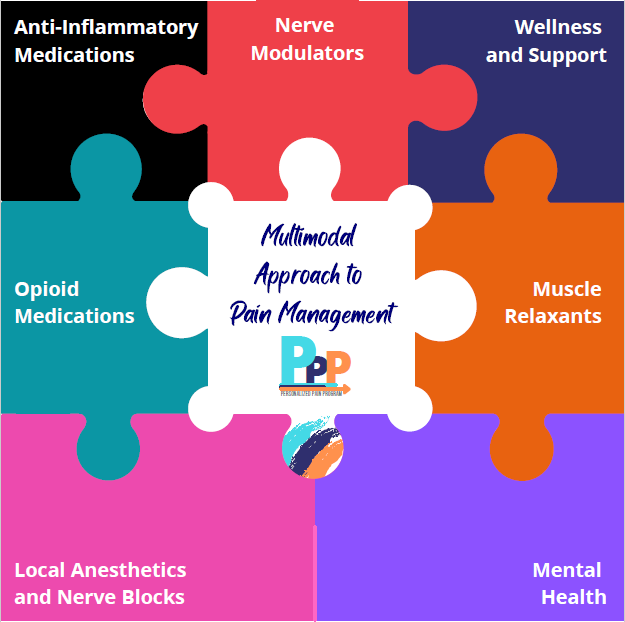Treatment Options
What is a Multimodal Approach?

We use a “multimodal approach” to treat your pain. Multimodal pain therapy has a technical definition – that is, using or combining different “groups” of medications and non-medications for pain relief. We may treat your pain differently before, during and after your surgery to best meet your needs. By combining medications and other interventions for pain relief that work differently in the body to treat pain, we are able to better control your pain. Other interventions may include non-medication therapies, like physical therapy and counseling, to treat your pain and improve your overall functioning.
We understand that being prescribed multiple medicines to take at different times of the day can be confusing. We’re here to help you, and you should always feel free to ask questions. Since each medication works differently in the body, they each can have different side effects. Our goal with using a combination of medicines is to decrease the number of drugs with the highest side effects (like opioids/narcotics) while still controlling your pain. We care about any and all side effects that you may be experiencing. We will tell you about any potential side effects that you may experience before prescribing a medication to you.
Unfortunately, we cannot take away 100% of your pain, and some pain after surgery is normal and expected. As your body heals, your pain should decrease each day during recovery. We are here to provide support and medications that control the pain so that you can get moving with physical therapy, have better rest at night, and regain function as quickly as possible after surgery.
-
Anti-inflammatory medications decrease swelling. Also known as NSAIDs, non-steroidal anti-inflammatory drugs, they include medications such as acetaminophen, celebcoxib, ibuprofen and naproxen.
-
Local anesthetics and nerve blocks numb nerves, the pathways for pain signals to the brain. Such medications can be administered through catheters, epidurals, or as lidocaine patches.
-
Mental health includes our emotional and social well-being. Pain is a process that involves both the body and mind. Chronic pain can cause mental health issues such as depression and anxiety, and depression and anxiety can worsen chronic pain. We know that treating the whole person – both body and mind – can be effective for pain management. A number of options are available and include cognitive behavioral therapy, mindfulness, supportive therapy, antidepressant and sleep-aid medications.
-
Muscle relaxants treat muscle spasms. They include medications such as cyclobenzaprine, methocarbamol and tizanidine.
-
Nerve modulators decrease pain and nerve excitement and include medications such as gabapentin and pregabalin.
-
Opioid medications include hydromorphone, morphine, oxycodone and tramadol. Providers often combine opioid medications with non-opioid medications to decrease the total dose of opioids that a patient has to take, and still get effective pain relief.
-
A number of non-medication therapies can also help with pain. These include occupational therapy, physical therapy, braces, heat and ice. Social support from family, friends or support groups are also important and helpful to people experiencing pain.
